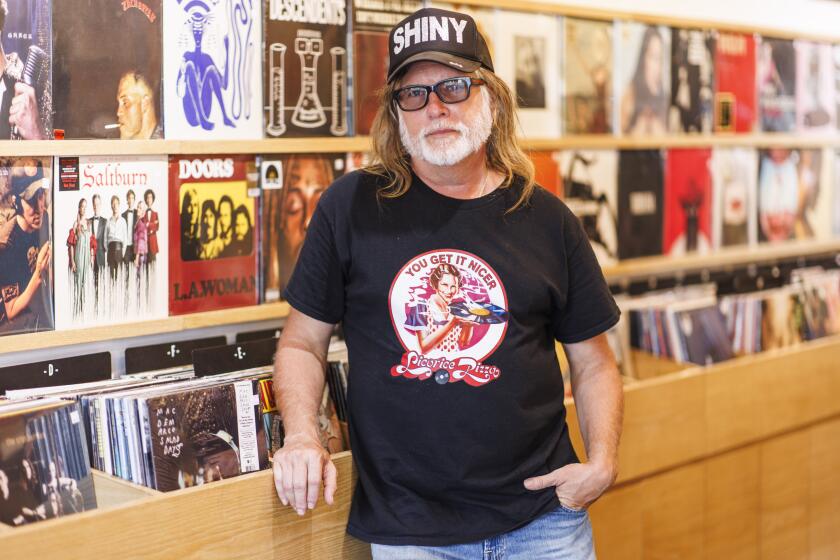LADY DAY HAD A RIGHT TO SING THE BLUES
Eleanora Fagan McKay, whom the world remembers best as Billy Holiday and whom Lester Young nicknamed “Lady Day”, would have been 71 April 7.
There will, of course, be no national commemoration of her birthday; nothing like the big plans for April 29 when, on the 87th anniversary of his birth, Duke Ellington will be honored by the issuance of a 22-cent postage stamp with his likeness.
Ellington, who came to fame early, never had to deal with traumas such as those endured by Hoiday during her relatively brief years of prominence. In fact, given the conditions under which she grew up, and the sheer chance incidents that led to her discovery, we are lucky to have known her at all. Her autobiography, “Lady Sings the Blues,” written for her by William Dufty, is best remember for its opening sentence: “Mom and Pop were just a couple of kids when they got married; he was 18, and she was 16 and I was three.”
Pop was Clarence Holiday, a guitarist who played in the bands of Fletcher Henderson, Benny Carter and Don Redman. The Holiday marriage was short-lived. Raised by her mother, Billie (who took the name from her favorite silent-movie star, Billie Dove) got as far as the fifth grade in school, picked up nickels scrubbing the doorsteps of white families, and ran errands for prostitutes in a whorehouse. “I’m not the only one who heard their first good jazz in a whorehouse,” she said in her book. “But...if I’d heard Louis Armstrong and Bessie Smith at a Girl Scout jamboree, I’d have loved it just the same.”
According to her version, Billie was never a prostitute herself in Baltimore, but was raped in the house when she was 10, was arrested and sentenced to do penance in a Catholic institution.
After her release, she went with her mother to New York. “Mom got me a room in a beautiful apartment belonging to a lady named Florence Williams.” What Mom failed to observe was that Florence was one of the biggest madams in Harlem. Billie said that within days she had her chance to become a strictly $20 call girl--”and I took it.”
Arrested again, she was sent to Welfare Island for four months, then wandered through Harlem looking for a job. At one club, Pod’s and Jerry’s, she auditioned as a dancer, failed, and was asked whether she could sing. She sang “Travelin’ All Alone,” was hired, and soon found herself earning a salary.
In 1933 at the Log Cabin, celebrities began to patronize the room: Paul Muni, John Hammond, Red Norvo, Mildred Bailey. Hammond brought Benny Goodman, who hired her to sing on two numbers on a record date. After the Log Cabin came the Hotcha and Dickie Wells’ club and even the Apollo, for a munificient $50 a week.
John Hammond eventually found her regular recording work as the vocalist with Teddy Wilson and his various recording groups. A year after that series, she also began recording regularly under her own imprimatur. I was at the first “Billie Holiday and Her Orchestra” session, as Hammond’s guest. Artie Shaw and Bunny Berigan were sidemen on the date. Billie sang two pop tunes of the day and poured her soul into “Summertime” (then a new song, too, since “Porgy and Bess” only had recently closed on Broadway).
When Billie had trouble with the fourth song, John Hammond called out from the control booth, “Billie, why don’t you just sing some blues?
“Billie’s Blues,” the product of that suggestion, was the first of a handful of songs in that idiom recorded by her. Though branded in the media (and by her book title) as a blues singer, she sang pop tunes and superior standard favorites almost exclusively; in fact, her only other celebrated blues was “Fine and Mellow,” immortalized in her TV appearance on “The Sound of Jazz.”
I suppose that when I spent an evening at her home (shortly after her stint with the Count Basie band), it was the first time she had ever been interviewed. Her mother, an enormous but very short woman with a kindly manner, was as unaware as I of Billie’s private indulgences; the heavy drinking and pot smoking were part of a life she lived away from home.
When she joined Artie Shaw, the first black singer with a white band, this was a unique event; I took a train to Boston for her opening night. There they sat, at opposite ends of the bandstand, Billie and Helen Forrest, the white “protection” vocalist who sang on most of the band’s records (Billie was under contract to another company). Shaw was very protective, but the insults were too much, and Billie finally quit in disgust on being told to use the back door--ironically, when the band was playing in a hotel named after Abraham Lincoln.
The golden years for Lady Day began with her long tenure at Cafe Society, the Greenwich Village club where both the show and the audience were integrated, a rarity then. She sang her own “God Bless the Child.” In 1939, she introduced “Strange Fruit,” the song about a lynching. Soon she was working at the 52nd Street clubs, where she could elicit pin-drop silence from a crowd of noisy drinkers.
The producer Milt Gabler signed her for Decca records and asked her to record a new song, “Lover Man.” “I want to do it with strings,” Billie insisted. She got her way, and this become one of a long line of songs indelibly associated with her. One was her own “Don’t Explain,” inspired by an incident involving her husband, Jimmie Munroe. It was after her marriage to Monroe, she wrote, that the involvement with hard drugs began: first opium, then heroin. While winning an Esquire award every year, singing at the Metropolitan Opera House and the Los Angeles Philharmonic (where Jerome Kern presented her with the “Esky” statuette), she was sinking deeper into a morass that inevitably led to her arrest.
One of my bittersweet memories is the farewell concert she gave at Carnegie Hall just before reporting to the federal authorities. She sang “I’ll Be Seeing You,” and if there were any dry eyes in the house, I failed to observe them.
Billie was released from the Alderson, W.Va., women’s facility looking healthy, even overweight. One night, she came over to cook dinner for my wife and me. On hearing that we were about to become parents, she said, “Wonderful! I want to be the godmother.” When Billie Lorraine Feather was born, her godmother knitted her a pair of booties.
It had long amazed me that Billie had never played outside the United States. I assembled a show call “Jazz Club U.S.A.” with her as the star, and the Red Norvo Trio, the Buddy De Franco Quartet and the all-female trio of the pianist Beryl Booker.
We opened in Stockholm in January, 1954, after the first of a series of disasters: Bad weather bumped our plane in Copenhagen and we straggled in by train a few hours before the first show.
In place of the ghetto theaters and sleazy dressing rooms that had marked too much of her like at home, Billie soon found herself besieged by autograph hunters, by fans bringing her bouquets on stage and treating her in a manner so deferential that she reacted accordingly. Her morale was never better.
Back home after that encouraging tour, she soon was surrounded by the old gang of hangers-on and pushers. By now she was recording for Norman Granz on Verve, but the strain of her life style had caught up with her vocal control; her final five years produced some sides worthy of her, along with several that revealed the toll taken on her range and her intonation. There was another arrest in 1956. Louis McKay, whom she had married around this time, moved to California.
In the fall of 1958, Billie agreed to make guest appearances at two concerts I had organized with a history of jazz format. A few old friends were there: Buck Clayton from the old Basie orchestra and Georgie Auld of the Shaw band. Backstage, she told my wife: “I’m so goddamn lonely--since Louis and I broke up I got nobody, nothing.”
We lived not far apart on the Upper West Side. After hearing about the death of Lester Young, to whom she had been so close in the Basie days, I dropped by to pick her up and take her to the funeral. In the taxi on the way downtown, she was sunk in gloom. “I’ll be the next one to go,” she said.
She was. Two months later, there was a pitiful final appearance in a benefit at the Phoenix Theatre for which Steven Allen and I were emcees. She looked so emaciated that I called Joe Glaser, her manager; the next morning we met at her apartment. He begged her to put herself in the hospital. “No, I’ll be all right; the doctor said these shots he’s giving me will do it. I’ve got to open in Montreal next Monday.”
That was seven days away. On the following Saturday, she collapsed and was carried first to one hospital, then another. In a gruesome finale, she was arrested on her death bed for possession; police were posted outside her room. On admission to the hospital, she had some money strapped to her leg and almost nothing in her bank account.
She died on July 17, 1959.
At noon on April 7, near the corner of Vine Street and Selma Avenue in Hollywood, a star carrying her name will be implanted in the sidewalk. Almost 27 years after she died in a New York hospital bed at the age of 44, Holiday will at last make Tinseltown’s Walk of Fame.
Her records are still with us, and the better-late-than-never Hollywood sidewalk star may remind a few stragglers that she was, as every singer from Frank Sinatra to some of today’s ingenues have agreed, the ultimate jazz singer.
As I once wrote in a retrospective essay, her voice was the voice of living intensity, of soul in the true sense of that greatly abused word. As a human being, she was sweet, sour, kind, mean, generous, profane, lovable and impossible, and nobody who knew her expects to see anyone quite like her ever again.
More to Read
The biggest entertainment stories
Get our big stories about Hollywood, film, television, music, arts, culture and more right in your inbox as soon as they publish.
You may occasionally receive promotional content from the Los Angeles Times.










